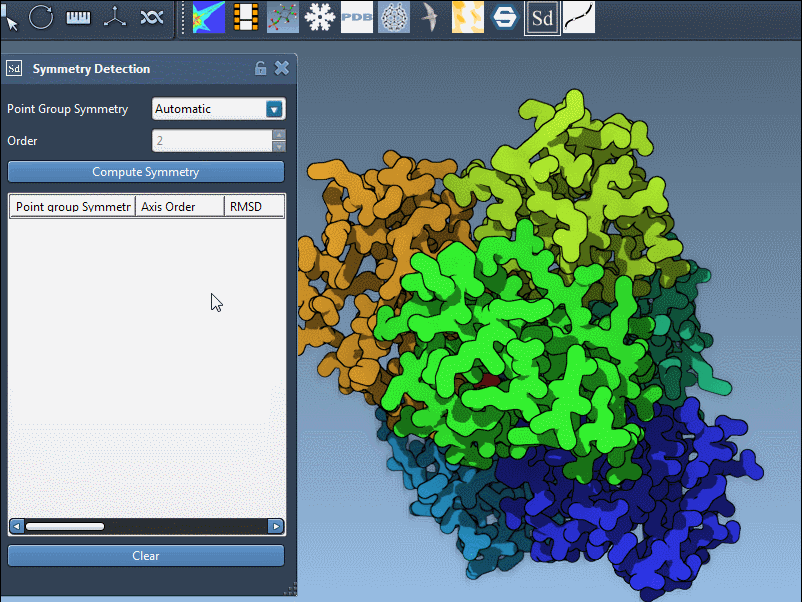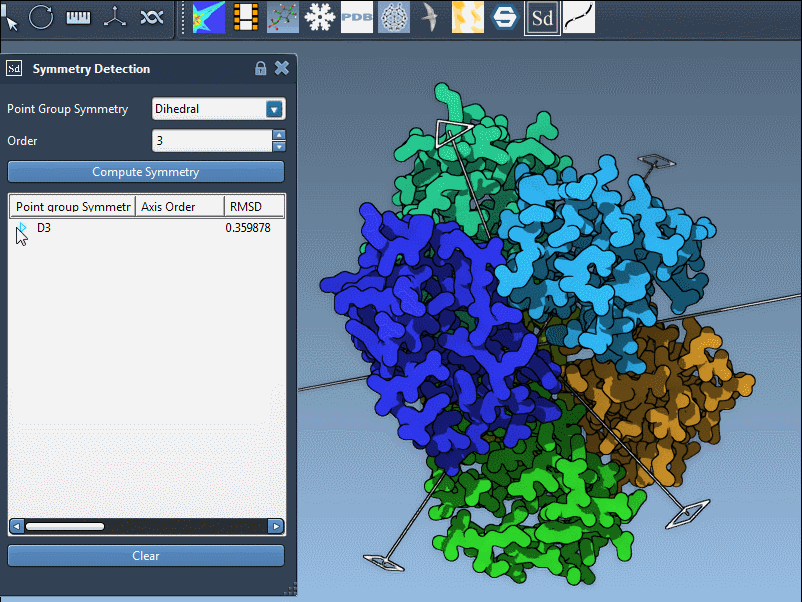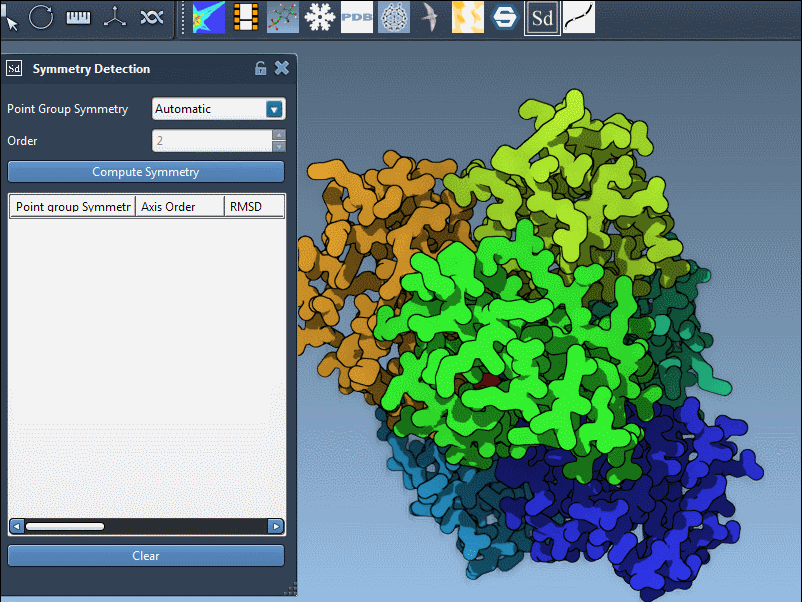When dealing with large macromolecular assemblies in structural biology, it is common to encounter multiple plausible symmetries within a single structure. Whether you’re simulating a viral capsid or designing symmetric nanomaterials, selecting the correct symmetry group can streamline your workflow and reduce computational cost. But how do you choose the best symmetry group when the app detects more than one?
Let’s look into this challenge using SAMSON’s Symmetry Detection extension, which analyzes assemblies and reveals multiple potential symmetry axes and types. While this may sound like a feature for experts, the process is interactive and can provide real insight into your system’s architecture.
Why does this happen?
Large biological systems often contain nested or overlapping symmetry elements. For example, a dihedral symmetry may be embedded within a higher-order icosahedral symmetry, or a structure might be just slightly asymmetric, leading the algorithm to propose multiple near-symmetries.
Step-by-Step: Selecting the Best Fit
Here’s how you can decide which group to work with:
- Prioritize groups with lower RMSD values: The root-mean-square deviation (RMSD) quantifies how closely the repeated elements superimpose. A lower RMSD usually indicates a more accurate symmetry.
- Visual inspection: Click on each proposed group in the detected symmetry list to highlight its main axis. This makes it easier to identify which symmetry best corresponds to your biochemical expectations.
- Use domain knowledge: If your biological system is known to have dihedral symmetry (e.g.,
D3), then selecting that explicitly from the dropdown menu helps override ambiguous results.

Detailed View: Exploring Axes within a Group
Each proposed symmetry group may contain several axes. SAMSON provides a user-friendly interface for exploring these:
- Single-click an axis: Highlights it in the 3D viewport.
- Double-click an axis: Aligns the camera to look straight down the axis, simplifying orientation and visual confirmation.
The visual feedback helps answer practical questions like: Is this axis correct? Do repeated units align as expected?

Manual Override When Needed
If you already know the symmetry group (from literature or database annotations), you can manually select it using dropdown lists. This is especially useful when the automatic detection gives noisy or ambiguous results for very large or flexible systems.

When in Doubt, Start with Visuals
Combining structural context—like ribbon models or colored chains—with symmetry axes helps give a clearer picture of how the symmetry manifests in your system. Consider using asymmetric unit coloring to emphasize repeats or use snapshots for presentations and documentation.
For more advanced use-cases, such as exporting a unique asymmetric unit for MD simulations or applying symmetry-aware design strategies, identifying the correct group becomes even more critical.
To learn more, head over to the official SAMSON Symmetry Detection documentation.
SAMSON and all SAMSON Extensions are free for non-commercial use. You can get SAMSON here.





